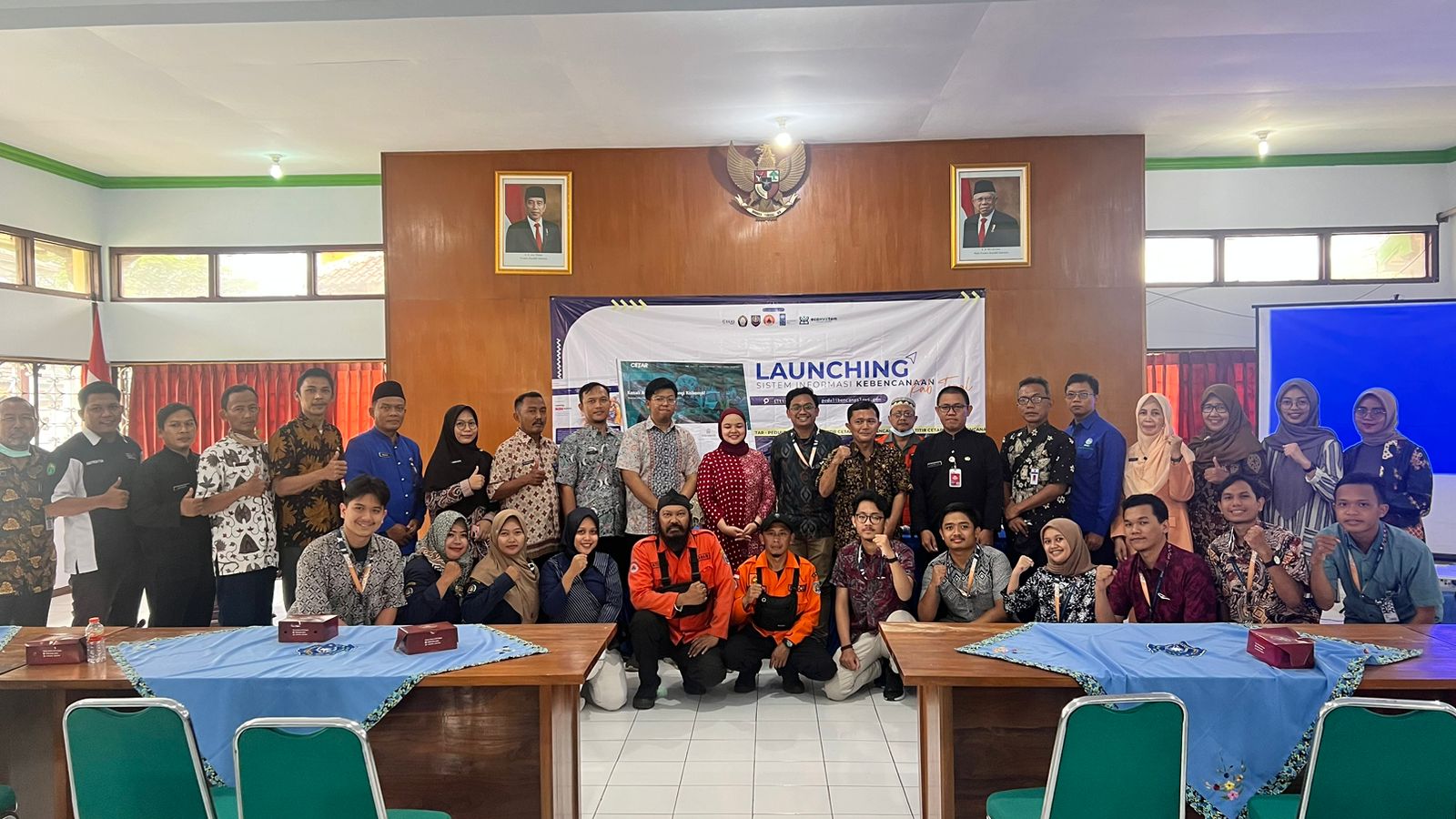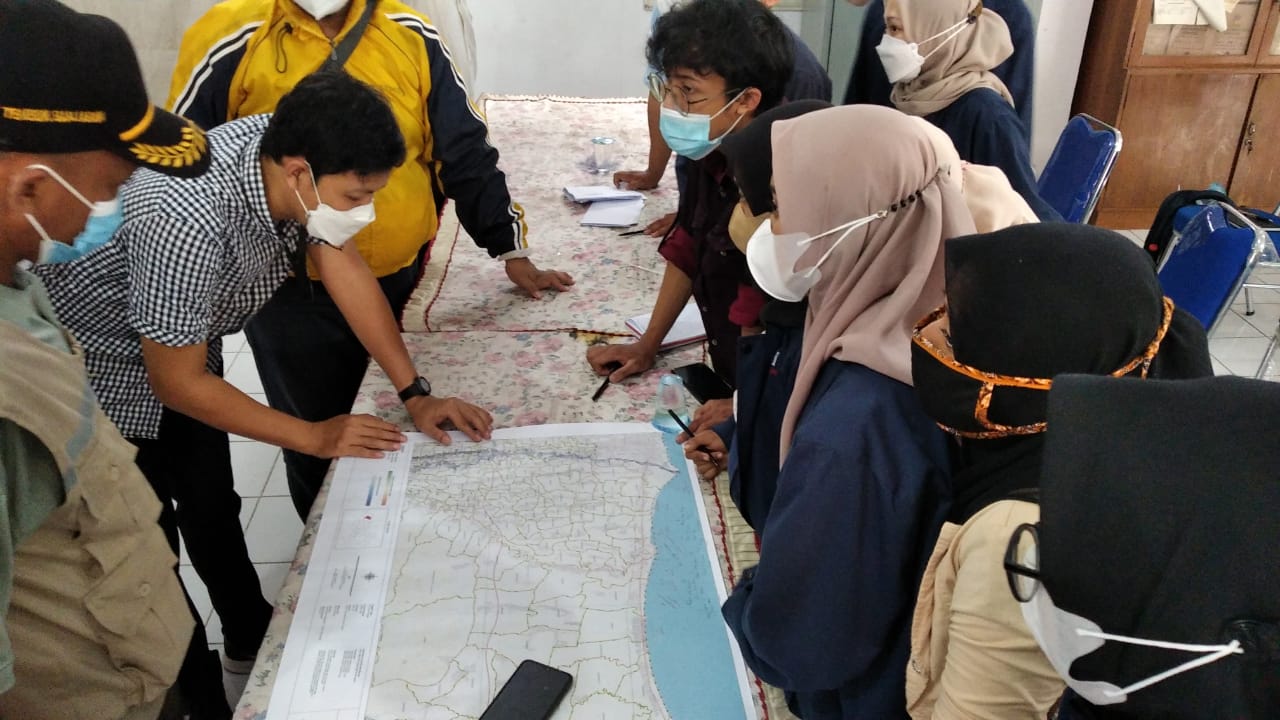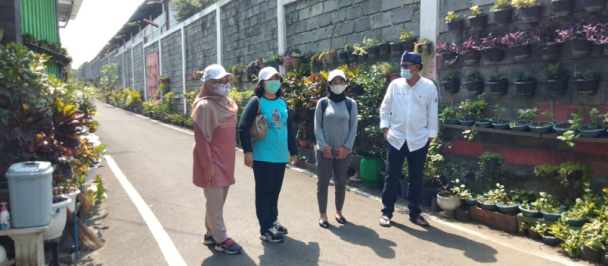Harnessing Digital Solutions to Strengthen City Resilience against Disasters
August 18, 2023

CEGAS Studio, UNDP, and beneficiaries at the launching of the disaster web platform
Indonesia, with its unique geographical location and geological characteristics, is prone to a variety of natural disasters. Urban areas are particularly more vulnerable to disasters due to factors such as population density, infrastructure complexity, and environmental risks. Among these cities is Slawi, a small town nestled in Central Java province. In 2021 alone, Slawi recorded at least 90 disaster incidents, including 27 floods, 33 landslides, and 30 tornadoes. These calamities affected over 70,000 local residents, resulting in estimated economic losses of IDR 6 to 7 trillion (USD 400-467 million). As cities face escalating disaster risks and challenges, innovative solutions are needed in building disaster resilience.
In response, the Urban Innovation Challenge, organized through a collaborative alliance between UNDP, the National Research and Innovation Agency (BRIN), and Ecoxyztem Venture Builder, has embarked on a journey to identify innovative strategies underpinning digital governance and literacy in urban areas, supporting “smart” cities. According to the World Bank (2021), a staggering 62% of Indonesian adults living in urban areas were already connected to the Internet by 2019. This convergence towards digital interfaces raises relevant questions: How can we ensure that these citizens have access to digital public services? How can digitalization play a pivotal role in strengthening the resilience of urban communities as they confront various shocks, such as disasters? Therefore, understanding the potential of digitalization and its application in disaster resilience becomes paramount.
In collaboration with the Center of Geomatic Applications for Sustainable Development (CEGAS Studio), a solution was devised, aimed to augment the digital and societal infrastructure to bolster disaster preparedness within Slawi. The solution embraces a participatory approach fostering smart urban resilience. Leveraging the demographic dominance of Slawi's youth populace, an opportunity arises for a more inclusive approach. This novel initiative intends to result in a disaster risk management information nexus, complemented by participatory disaster risk mapping. This system covered the several stages of a disaster—preparedness ahead of an event, mitigation of disasters, immediate response, and recovery from disasters—based on a disaster management framework by the National Disaster Management Agency (BNPB). Its objective is to empower local volunteers to actively contribute to the collection of information, while also enabling the platform to support both the government and the general public in their disaster response efforts.

Participatory mapping process with local communities
While the overarching intent remains for the betterment of Slawi residents as a whole, the initiative reserves particular focus on three distinct groups. The first group is disaster volunteers, who are at the forefront of disaster response in Slawi. Through active engagement with 25 local volunteers and providing them with the necessary digital tools and training, the project successfully mapped 100% of disaster-prone areas in Slawi. The incorporation of local knowledge into the mapping process further enriched the accuracy and relevance of the compiled data. Equipped with the knowledge and the digital platform developed, these volunteers are now empowered to respond more effectively to disasters and contribute significantly to the improvement of their community's safety and resilience.
At the same time, there is focus towards two integral groups—women and youth, recognizing that they are among the most vulnerable during times of disaster (UNDP 2022). Deliberate actions have thus been undertaken to encourage active engagement from these cohorts, giving them agency in disaster mitigation and response. Specifically, outreach efforts were made to women’s ‘family welfare’ associations and high school students, enrolling 90 participants – of which more than 80% are women – to learn about disaster preparedness and instruction on using digital tools. In addition, the team also developed a pocketbook designed to help the wider local community understand the disaster risks of Slawi as well as how to mitigate and respond to them. Equipping women and youth with the knowledge and skills to face disasters thus translates into a strengthened capacity to navigate disaster scenarios, fostering a resilient ecosystem that can adeptly weather unforeseen storms.
To ensure the long-term sustainability of this project, CEGAS Studio partnered up with the Regional Disaster Management Agency (BPBD) of Tegal Regency. A ‘technology transfer’ session was organized, involving the agency as well as local volunteers. After the piloting phase was completed, the disaster web platform was incorporated into the existing Titir Cetar website, owned by Tegal Regency. "Through this portal, local residents can be prepared and alert in facing disasters. Know the threats, and we can reduce the risk,” stated Elliya Hidayah, the head of Tegal Regency’s BPBD.
Looking at the bigger picture, this development of an online platform for disaster risk mitigation and response offers a glimpse of Indonesia’s future smart cities. By digitalizing public services, urban citizens gain the ability to actively participate in city governance. Moreover, this innovation holds replication potential, supporting Indonesia's digital transformation and building resilience in cities nationwide.
In conclusion, while disasters aren’t always evitable, the residents of Slawi, armed with the knowledge and resources provided by this solution, can mitigate the impact of disasters, and swiftly recover, fostering resilience in the face of adversity. By embracing innovative approaches to disaster preparedness and response, communities can build a brighter and more secure future for themselves, ensuring their ability to bounce back and thrive in the aftermath of challenging times.
Text by Indrajit Joyosumarto (Innovation Officer UNDP Accelerator Lab) and Muhammad Didi Hardiana (Head of Experimentation UNDP Accelerator Lab)
Photos by CEGAS Studio

 Locations
Locations


